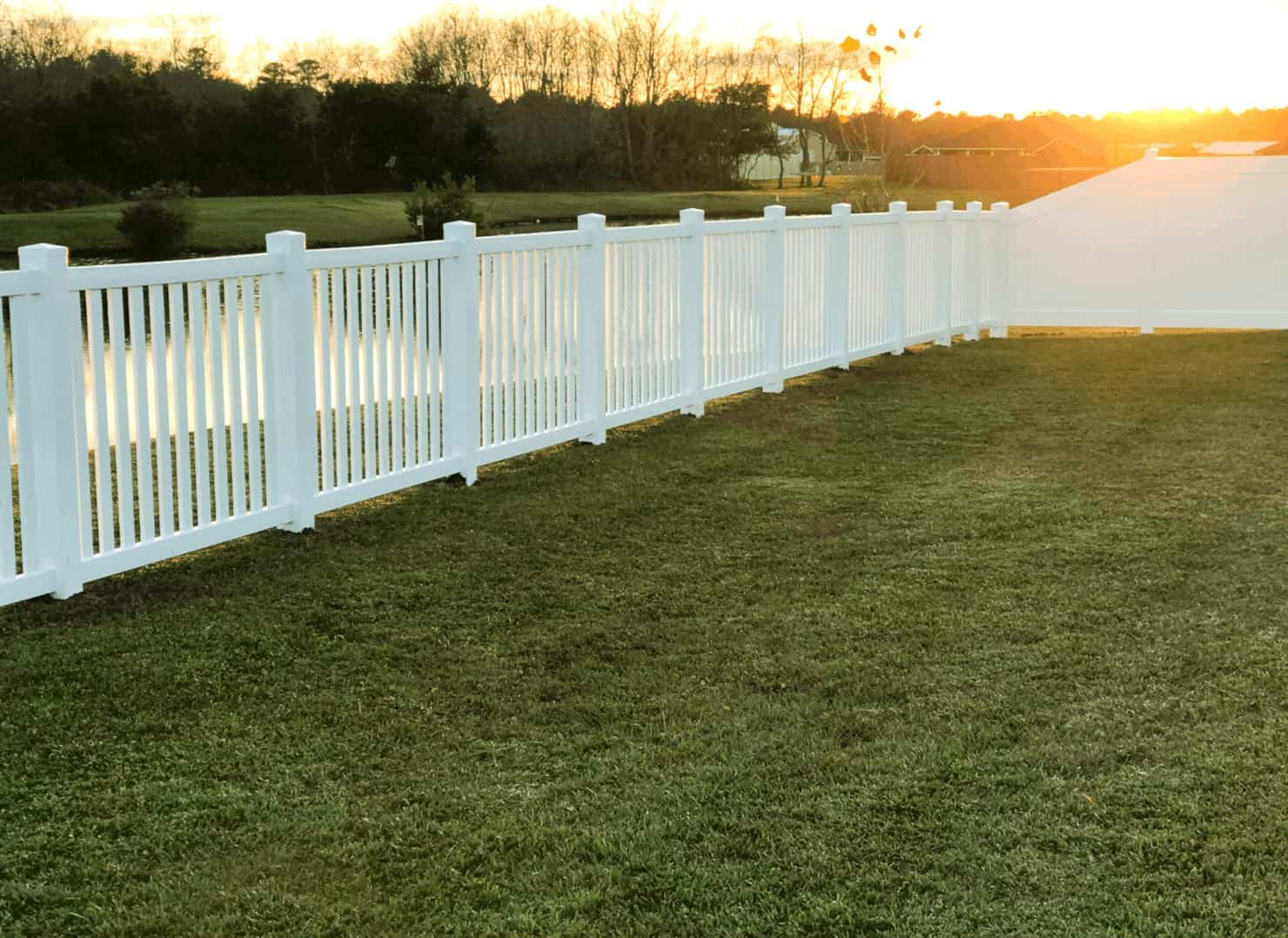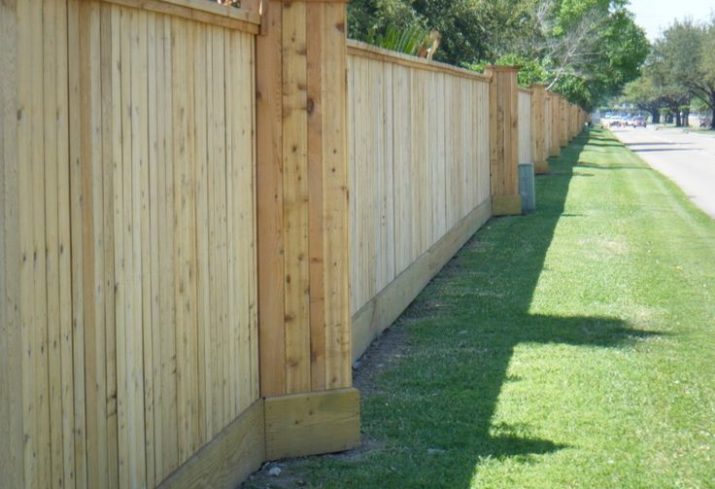Your Guide to Hiring a Trusted Fence Contractor Owensboro KY
Your Guide to Hiring a Trusted Fence Contractor Owensboro KY
Blog Article
How to Determine Typical Issues That Call For Immediate Fencing Repair
When it involves maintaining your fence, it is critical to spot issues prior to they end up being larger issues. Consistently looking for signs of decomposing wood, leaning panels, or corrosion can save you money and time over time. You may not understand just how climate and bugs can compromise your fencing's honesty. Allow's explore the usual indications that show your fence requires instant attention, so you can keep your home protected and looking its ideal.
Indicators of Rotting Timber in Wooden Fences
Have you observed your wooden fencing looking a bit shabby? It may be time to inspect for indicators of decaying timber if so. Initially, check out the base of the articles and panels for soft areas. If you continue the wood and it really feels squishy or falls apart, that's a clear sign of rot. Next, try to find staining or dark areas on the timber-- these typically signal moisture damages. Take note of any peeling paint or coating, as this can reveal the timber to more decay. Furthermore, a pungent, musty smell can suggest fungal growth. Do not neglect to check connections and joints; if they're loosened or crumbling, the wood underneath is most likely endangered. By capturing these signs early, you can protect against more substantial damage and keep your fencing standing solid. Regular maintenance is crucial to extending the life of your wooden fence.
Leaning or Tilting Fencing Panels
If you've noticed your fencing panels turning or leaning, it's important to understand what created it. This concern might show underlying structural damages that requires your attention. Let's explore the common causes and the fixing choices readily available to obtain your fence back fit.

Reasons of Leaning Panels
When you discover your fencing panels tilting or leaning, it's frequently an indicator of underlying problems that need attending to. One common cause is insufficient drain; excessive water can erode the dirt around the fence posts, damaging their assistance. An additional culprit might be solid winds or storms that push against the panels, specifically if they're not correctly anchored. Furthermore, the all-natural settling of dirt with time can cause articles to change, resulting in a tilt. Pests, like termites, can endanger the honesty of wooden panels, triggering them to lean. Poor setup practices may result in panels not being securely set, leaving them at risk to leaning under pressure. Address these problems quickly to maintain your fence's integrity.
Indicators of Structural Damages
Seeing leaning or turning fence panels can be worrying, as these problems typically suggest architectural damages that needs prompt focus. When your fence starts to lean, it might indicate that the messages are changing or that the soil around them has deteriorated. Pay close interest to gaps in between posts or panels, as these can also suggest instability. deck builder. Additionally, check for fractures or splintering in the wood, which can weaken the total framework. If you see rust or deterioration on metal elements, it might jeopardize the stability of the fencing. Bear in mind, ignoring these indicators can cause a lot more serious damages down the line, so it's vital to analyze the scenario promptly and do something about it prior to it worsens
Repair Work Options Available

Rust and Deterioration in Metal Fences
If you possess a steel fencing, you could discover corrosion and deterioration sneaking in with time, specifically if it's revealed to moisture. These problems not just affect the appearance of your fence yet can likewise endanger its structural stability. To recognize corrosion, seek reddish-brown areas or spots, which indicate the metal is oxidizing. Deterioration can spread swiftly if left neglected, leading and damaging the fence to pricey repairs.To tackle corrosion and corrosion, you must cleanse the affected areas with a cable brush and use a rust-inhibiting guide. When the guide dries out, take into consideration repainting the fencing with a weather-resistant paint to shield it even more. Regular maintenance, such as inspecting for signs of corrosion and retouching paint as needed, will assist prolong your fencing's lifespan. Attending to these issues immediately ensures your metal fence stays strong and aesthetically appealing for several years to come.
Fractures and Splits in Plastic Fence

Root Causes Of Plastic Damages
Plastic fencing is preferred for its durability, yet it can still struggle with fractures and splits because of numerous factors. One major cause is extreme temperature changes. When plastic expands in the heat and contracts in the cool, it can deteriorate the material in time. Furthermore, exposure to extreme sunshine can cause UV destruction, making the vinyl fragile. Physical impacts, like unexpected accidents or heavy branches, can also develop cracks. Poor setup or utilizing low-grade materials can aggravate these issues. Age plays a function; older vinyl fence is more prone to damage. Regular evaluations can aid you determine these variables before they lead to significant problems. Take aggressive measures to assure your fence stays solid and undamaged.
Fixing Cracks Efficiently
Fractures and splits in your vinyl fencing can be worrying, addressing them without delay can avoid further damages and maintain the fence's appearance. Initially, examine the dimension of the crack. For small fractures, a plastic repair service kit usually consists of adhesive that can bond the sides, providing a seamless read more solution. Clean the location thoroughly prior to using the glue, ensuring it adheres correctly. For larger divides, you could require to make use of a vinyl spot. Cut the spot to size, apply glue around the edges, and press it securely onto the split. Enable it to heal as per the producer's instructions. Normal upkeep and fast repair work can prolong your fence's life expectancy, keeping it looking great for years ahead.
Loosened or Missing Fence Posts
Loose or missing fencing articles can weaken the security of your entire fence framework. If you discover any kind of blog posts tottering or leaning, it's essential to deal with the issue promptly. Check for any type of indications of activity, as this can cause additional damage in time. You can quickly examine the issue by giving each blog post a gentle shake-- if it really feels unpredictable, it's time to take action.For missing posts, you'll require to change them asap to preserve your fencing's honesty. When you mount brand-new articles, make certain they're securely anchored in the ground with concrete or gravel for included security. If a message is loosened, tighten it by adding added support or driving it deeper right into the ground.Ignoring these problems can result in bigger issues, like voids in your fence and even full collapse. So, maintain an eye on your articles and remain aggressive about repair work!
Damage From Climate and Natural Components
Weather condition and natural elements can unleash chaos on your fencing, resulting in various kinds of damages that need punctual focus. Heavy rainfall can cause wood to rot, making it weak and unsteady. Snow buildup could bend or damage panels, while strong winds can uproot fencing articles or cause sections to lean.If you notice fractures or splintering in wood fencings, it signifies drying out because of extreme sunlight direct exposure. Steel fencings can corrosion if safety coverings put on off, particularly in coastal or humid areas.Inspect your fencing frequently after storms or severe climate to catch any damages early. Dealing with these problems rapidly can conserve you from expensive fixings down the line. Do not wait up until a little problem turns right into a major one; stay proactive and maintain your surround top form to keep both functionality and curb charm.
Bug Invasion and Termite Damages
When you notice signs of pest infestation or termite damages, it's vital to act rapidly to avoid additional damage. Look for mud tubes along your fencing or hollow-sounding wood, as these suggest termites are at job. You might also see little holes or frass, which is termite droppings looking like sawdust. If you detect any one of these signs, it's time to examine the damage.Don' t delay until it's as well late; pests can endanger your fence's honesty. Check the surrounding location for beetles or ants, as they may be adding to the trouble. If you think an invasion, consider contacting an insect control professional to validate and deal with the issue.Repairing or replacing damaged sections of your fencing quickly not only recovers its strength but additionally avoids insects from spreading out further. Remain watchful to maintain your residential or commercial property pest-free and protected.
Often Asked Inquiries
How Typically Should I Inspect My Fence for Damage?
You need to examine your fence at least two times a year, preferably throughout springtime and fall. Regular checks aid you find damages early, saving you time and money on fixings while keeping your residential property's appearance and protection.
Can I Repair a Fence Myself or Work With a Specialist?
If you have the right tools and skills, you can absolutely fix a fence yourself. Nevertheless, working with a specialist warranties top quality work and saves you time, especially for complex fixings or considerable damages.
What Devices Are Required for Basic Fence Repairs?
For basic fencing repair services, you'll need devices like a hammer, screwdriver, pliers, a saw, a level, and measuring tape. deck builder. Depending upon the repair service, you might also need nails, screws, or substitute boards
Just How Much Does Fencing Repair Service Commonly Expense?
Fence repair work expenses vary widely, yet you can anticipate to pay in between $200 and $1,500 relying on products, labor, and degree of damages. It's wise to get several quotes for the ideal bargain.
When Is the most effective Time of Year for Fencing Services?
The very best time for fencing fixings is during light weather condition, normally in springtime or early fall. You'll avoid extreme temperature levels, making it much easier to work and ensuring the materials set effectively for lasting longevity (deck builder). Seeing turning or leaning fence panels can be disconcerting, as these problems usually suggest architectural damage that needs instant interest. Absent or loose fence messages can weaken the stability of your entire fence structure. Snow buildup may flex or break panels, while strong winds can root out fence messages or create sections to lean.If you notice splits or splintering in wooden fencings, it's an indication of drying out due to extreme sun direct exposure. Steel fences can rust if protective coverings use off, particularly in moist or seaside areas.Inspect your fence routinely after tornados or extreme weather condition to catch any type of damages early. Fence fixing costs differ widely, however you can expect to pay between $200 and $1,500 depending on materials, labor, and degree of damages
Report this page